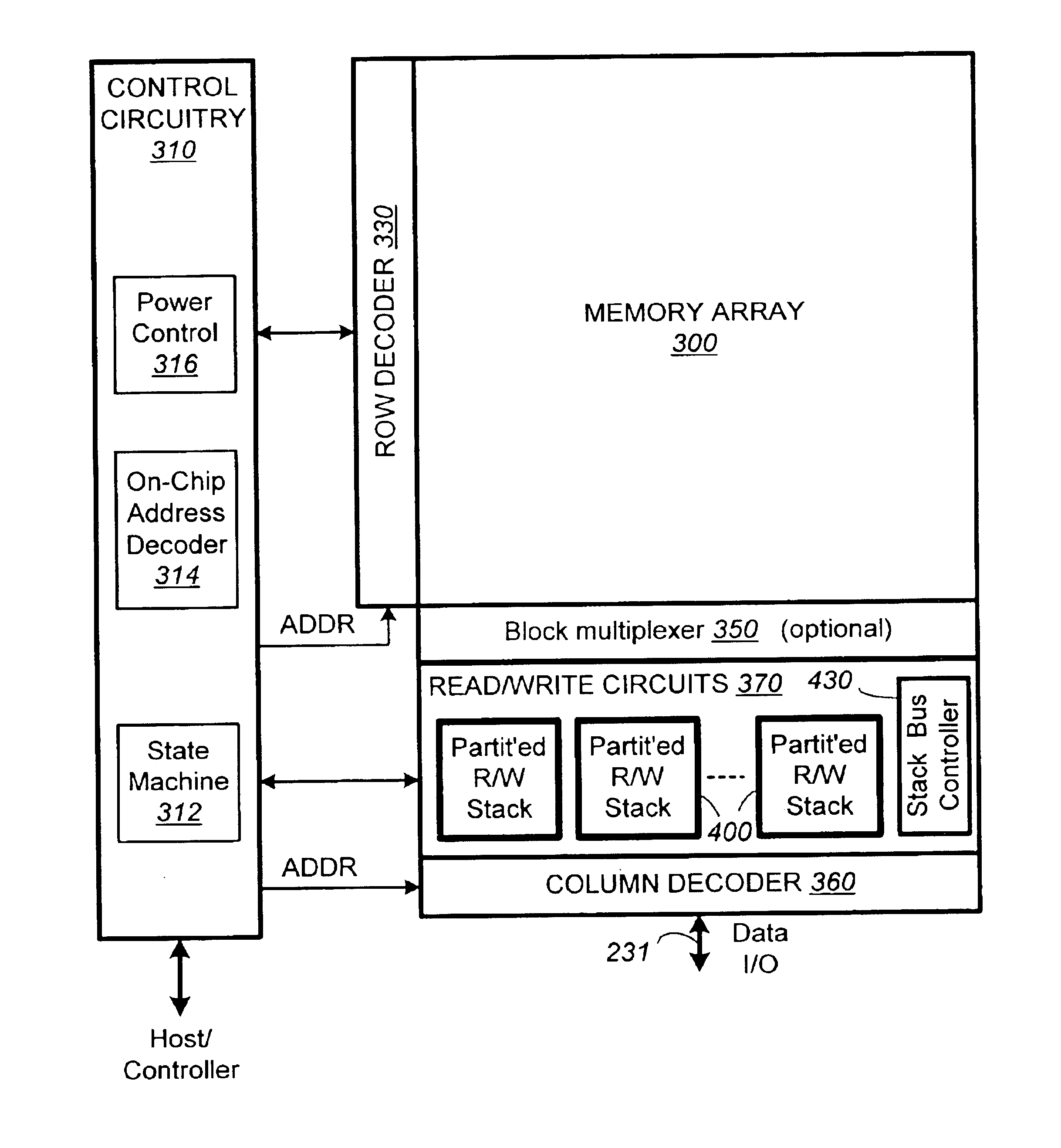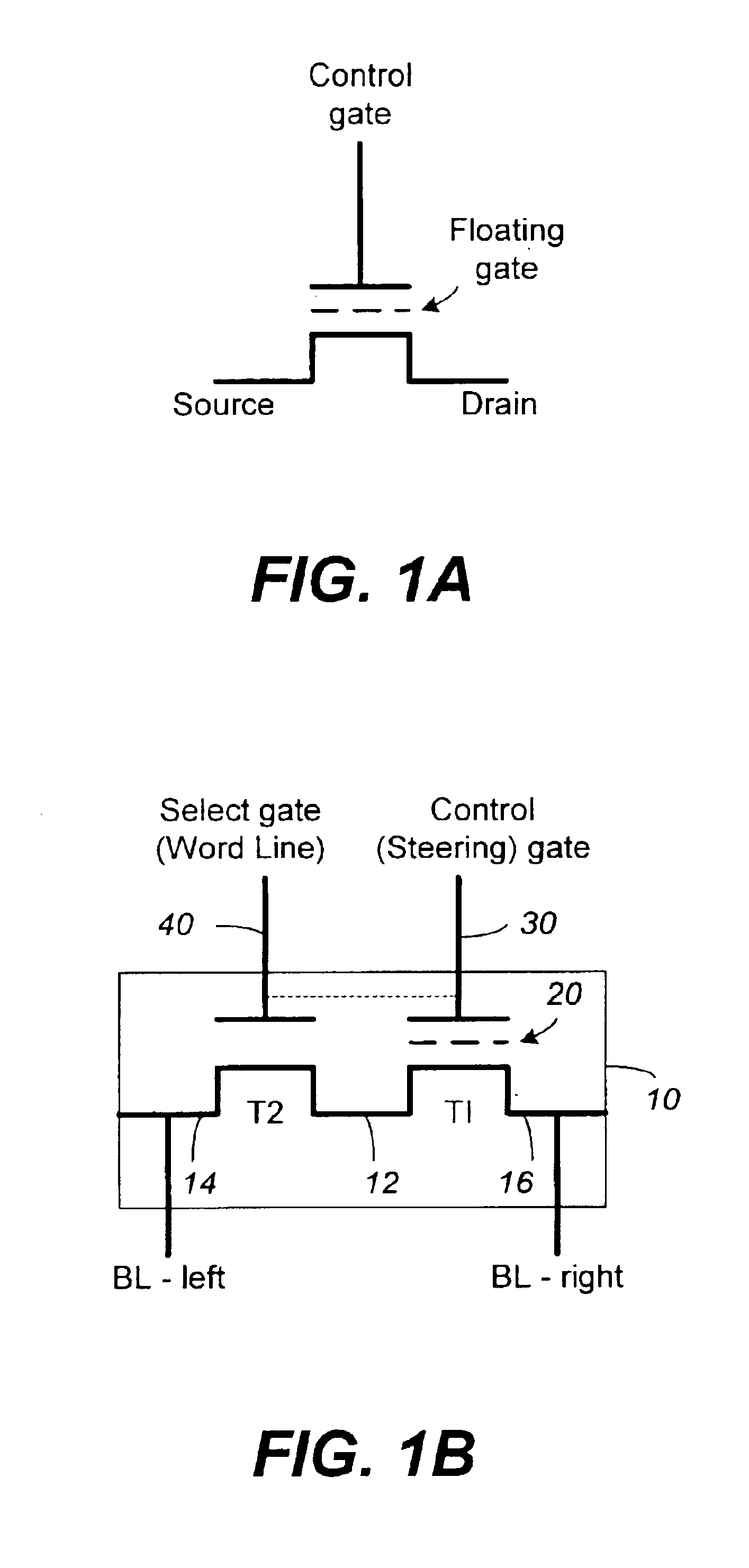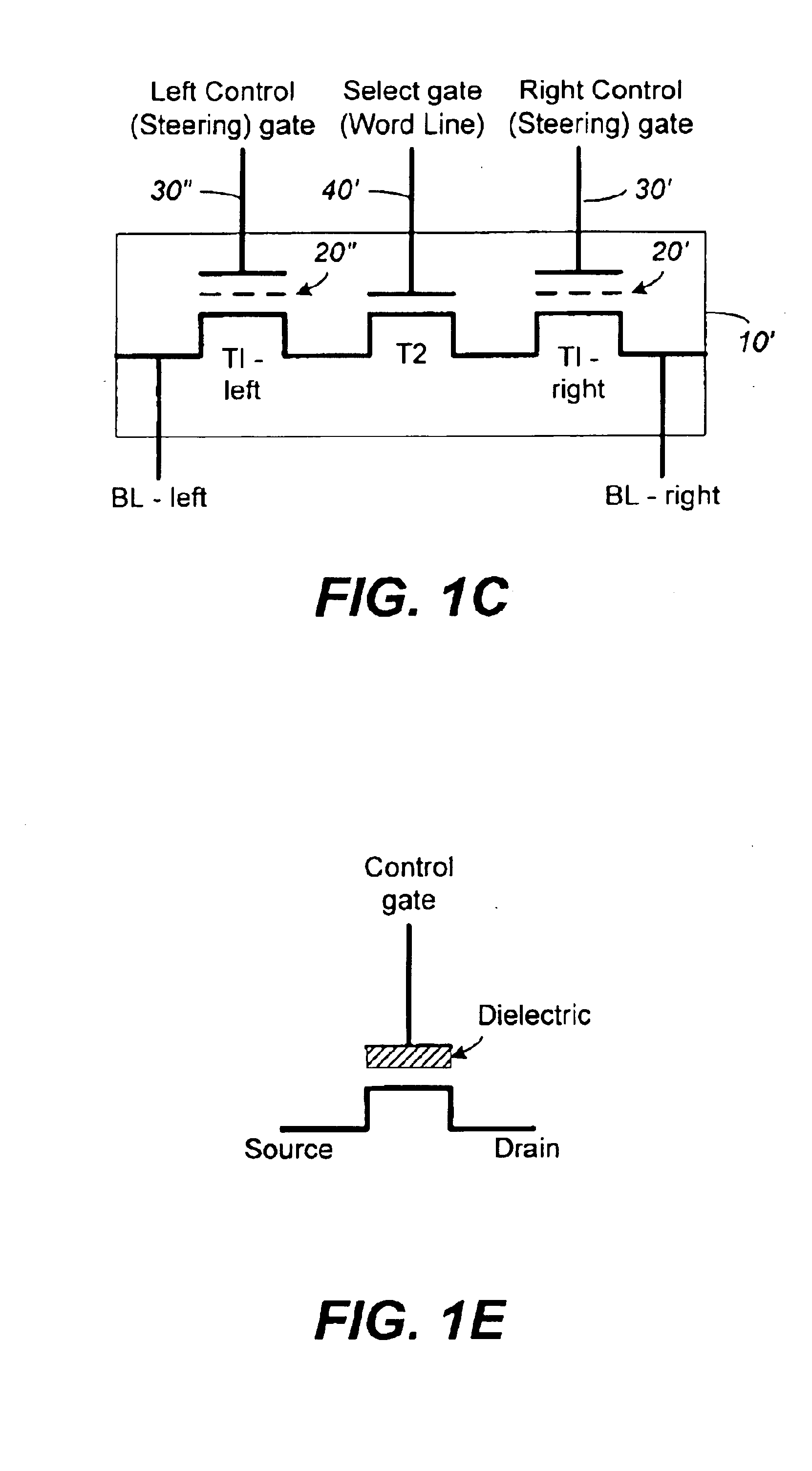Highly compact non-volatile memory and method therefor with internal serial buses
a non-volatile memory, high-compact technology, applied in static storage, digital storage, instruments, etc., can solve the problems of unsuitable large disk drive volume, and inability to meet the needs of mobile and handheld environment, and achieve significant space and power saving, reduce redundancy, and high performance
- Summary
- Abstract
- Description
- Claims
- Application Information
AI Technical Summary
Benefits of technology
Problems solved by technology
Method used
Image
Examples
Embodiment Construction
[0076]FIG. 7A is a schematic block diagram of an individual read / write module 200 partitioned into a core portion 210 and it common portion 220, according to a preferred embodiment of the present invention. The core portion 210 comprises a sense amplifier 212 that determines whether a conduction current in a connected bit line 211 is above or below a predetermined threshold level. As described in an earlier section, the connected bit line 211 enables access to the drain of an addressed memory cell in an array.
[0077]In one embodiment, the core portion 210 also includes a bit line latch 214. The bit line latch is used to set a voltage condition on the connected bit line 211. In one implementation, a predetermined state latched in the bit line latch will result in the connected bit line 211 being pulled to a state designating program inhibit (e.g., Vdd.) This feature is used for program inhibition as will be described later.
[0078]The common portion 220 comprises a processor 222, a set ...
PUM
 Login to View More
Login to View More Abstract
Description
Claims
Application Information
 Login to View More
Login to View More - R&D
- Intellectual Property
- Life Sciences
- Materials
- Tech Scout
- Unparalleled Data Quality
- Higher Quality Content
- 60% Fewer Hallucinations
Browse by: Latest US Patents, China's latest patents, Technical Efficacy Thesaurus, Application Domain, Technology Topic, Popular Technical Reports.
© 2025 PatSnap. All rights reserved.Legal|Privacy policy|Modern Slavery Act Transparency Statement|Sitemap|About US| Contact US: help@patsnap.com



